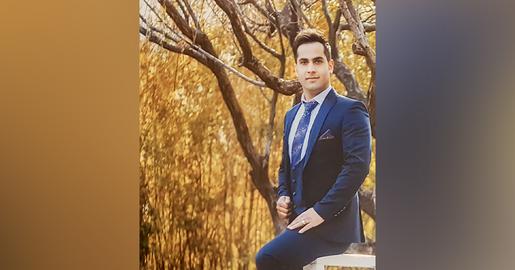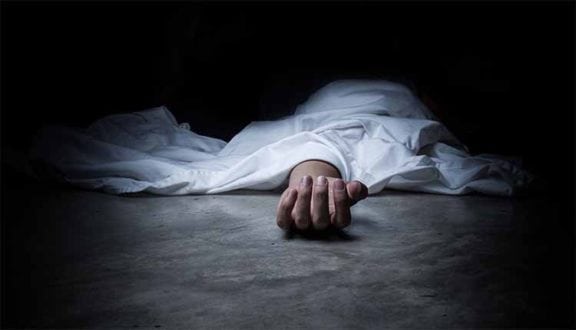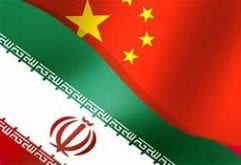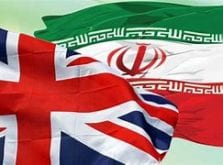Iranwire – Images of the body of a young man who had been shot in the head on October 8, 2022, from a distance of half a meter, were quickly shared on social media. He was behind the wheel of a green Kia Pride on Bahman 6th Street in Sanandaj, the provincial capital of Kurdistan province, when his car was targeted by plainclothes security agents armed with clubs and chains. A few seconds later, a shot ended the life of 31-year-old Yahya Rahimi.

***
A few hours after Yahya was killed, his brother watched a video on BBC Persian’s Instagram page. At first, he did not realize he was watching his brother’s killing. He was busy writing a comment when the license plate of the car caught his attention. He watched the video again and understood it depicted the last moments of his brother’s life, a brother who was going to his workplace when he noticed that security agents were attacking protesters. He honked his car’s horn to show support for the people and was killed by a shot to his head.
His death certificate mentions that a high-speed projectile caused extensive damage to the brain tissue and crushed the skull.
A few days after Yahya Rahimi’s death, his family engaged the services of a lawyer whose office is located on the same street where the young man was killed. “We had heard that this lawyer was one of the first people on the scene, so we chose him to pursue the case. But on the same day we visited the lawyer’s office, the Intelligence Department called us,” Yahya’s father, Ahmad Rahimi, told IranWire.
During that call, says Ahmad Rahimi, he was threatened to either stop pursuing the case or lose his other son. On the same day, the lawyer quit after he was also threatened by the security agencies.
Without the help of a lawyer, Ahmad Rahimi filed a lawsuit 10 days after Yahya’s death to seek justice but, after nine months, the authorities have not taken any action: “One day they say the judge is on vacation, another day they tell me to go and come back in 10 days. Then they say the judge handling the case was changed or that the case was transferred to the military prosecutor’s office and sent to Tehran…Roghieh Fatahi, the deputy prosecutor of Sanandaj, even says that Yahya’s killer was a member of Komalah,” a Kurdish communist party.
Finally, after nine months, the court told Yahya’s father: “Yes, our own forces shot your son.” But they refused to identify the killer and told the family that the case has been sent to the military prosecutor’s office and they must wait for the results.
This contradicts the claim by the judiciary officials who, a few days after Yahya was killed, told his family that the murderer was an individual named Ramin Fatehi.
Fatehi was arrested on October 13, 2022, five days after the death of Yahya, and just eight days later his family was asked to come to identify his lifeless body. Ramtin Fatehi, the son of Ramin Fatehi, told Radio Farda, “My father was moving a customer’s load with a van from Sanandaj to Saqqez when he was arrested by security agents and taken to an unknown location. Then they arrested my uncle and aunt as well.”
Yahya’s father rejected the claim that Ramin Fatehi is the killer of his son. “They killed Ramin under torture and then claimed he had committed suicide, whereas we know that my son was killed by plainclothes agents of the Revolutionary Guards,” he told IranWire.
“Ramin died under torture in the Intelligence Department’s detention facility, but the security authorities informed the Fatehi family that he committed suicide,” one of Fatehi’s relatives told the Kurdish human rights organization Hengaw.
After the “suicide” of Ramin Fathi, Ahmad Rahimi went to Behesht Mohammadi Cemetery in Sanandaj and put a bouquet of flowers on his grave, which is located very close to Yahya Rahimi’s burial place.
Throughout all these months, he has had only one demand: be informed of the identity of his child’s killer. He has repeatedly requested to see the recordings of the city’s surveillance cameras in the area where his son was killed, but this demand has been denied so far.
Yahya’s father told IranWire that, according to shopkeepers in the area, security forces took away all the recordings of the surveillance cameras in the shops within 10 minutes after the shooting. But he has found the killer by examining pictures and videos recorded by people who were on the scene: “A person wearing a hat and holding a 12mm shotgun.”
He said that, on October 8, Revolutionary Guards, in uniform and plainclothes, were in Bahman 6th Street.
Ten Months of Unrelenting Pressure
Pressure by security agencies started almost immediately after Yahya was shot dead.
On October 8, Yahya’s parents went to the village of Hossein Abad. In the evening, their other son called his father and told him Yahya had been shot and taken to a hospital.
They were on their way to Sanandaj when the security agencies started calling them. They only learned of their son’s death when they arrived at their house in Sanandaj: “The alley and the yard of the house were full of neighbors and people who were shouting that ‘a martyr never dies.’ Then I found out my son had been martyred,” says Yahya’s father.
The same night, security agencies called the family and said they would not allow Yahya Rahimi to be buried in his ancestral village. However, they allowed the family to choose between Behesht Mohammadi Cemetery in Sanandaj and another cemetery in the city to bury their son.
Yahya Rahimi was buried at 2:00 a.m. on October 9 in the presence of his father, mother, sister and brother amid heavy presence of police, special forces and plainclothesmen. The same night the head of the Criminal Investigation Department of Sanandaj’s Police told Yahya’s father that his son was a “martyr.”
A few days later, representatives of the Martyrs Foundation and the provincial government visited the Rahimi family’s home and offered them 1 billion tomans to gain the relatives’ consent to call their son a “martyr.” “They came with a file and claimed that the Martyrs Foundation has registered my son’s name as a martyr,” says Ahmad Rahimi. He threw the dossier into the yard and told the officials: “You have offered your condolences. Now, go!”
Another day, the administrator of Hossein Abad Village visited their home, claimed that the assailant had been a member of Komalah and tried to gain the family’s consent to designate Yahya as a “martyr of the Islamic Revolution” and appear on state TV. “I told the administrator: ‘You say that my son was shot by Komalah and the [Kurdish Democratic Party of Iran]? Good for them! Now get out of here,” Yahya’s father said.
Security agencies also invited the Rahimi family to meet with President Ebrahim Raisi when he visited Kurdistan province later last year, but they ignored the invitation.
Pressures on the family have continued unabated since Yahya’s death. On the one hand, the officials have ignored the lawsuit filed by his father and, on the other hand, they have pressured the family to agree to Yahya’s designation as a “Martyr of the Islamic Revolution.”
Yahya Rahimi had got married only 10 months before he was murdered by an agent of the Islamic Republic, which has been pressuring his father to say that he was a member of the paramilitary Basij organization who was martyred to save the regime. Yahya Rahimi had bought a small plot of land in the hope of building a house where he and his wife could live together.
“We are only seeking justice and we want them to identify who murdered our son,” said Yahya’s father.
 Shabtabnews In this dark night, I have lost my way – Arise from a corner, oh you the star of guidance.
Shabtabnews In this dark night, I have lost my way – Arise from a corner, oh you the star of guidance.



